Piece corps: Wallpaper* and Sotheby’s join forces to reveal what great design is made of

Leon Chew - Photography
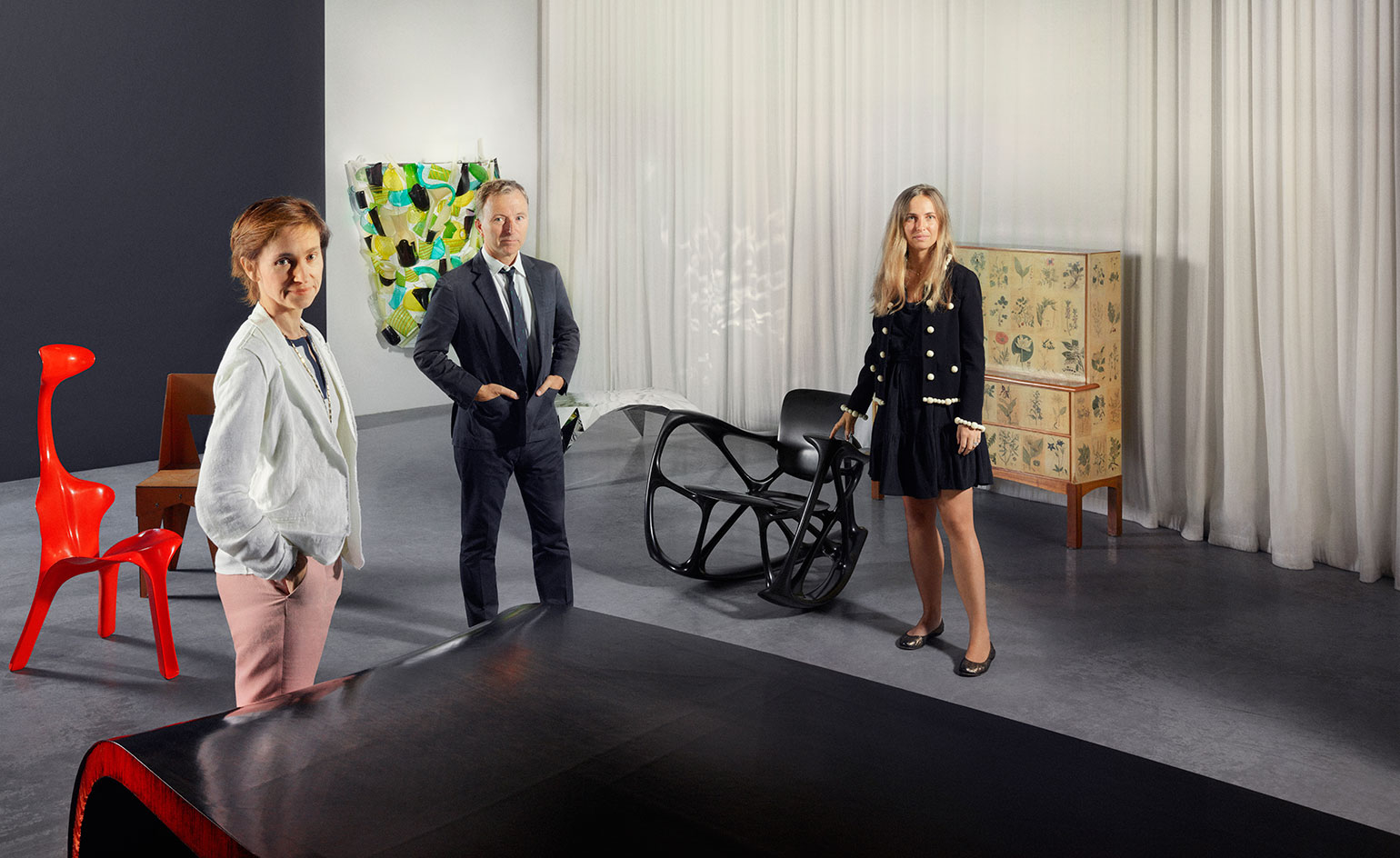
Sotheby’s 20th century design specialists Cécile Verdier, senior director, and Laetitia Contat-Desfontaines, deputy director and head of sale, with Wallpaper* brand and content director Tony Chambers, at Sotheby’s warehouse in West London. From left to right; ‘Floris’ chair in moulded fibreglass-reinforced polyester, 1967, by Günter Beltzig; ‘Wing-Nut’ chair in hardboard, piano hinges and wing-nut connectors, 1985, by Jasper Morrison; ‘All Night Long’ table in coated carbon fibre and Nomex honeycomb paper, 2002, by Ron Arad; ‘Fragments’ wall lamp in reclaimed Venini glass and steel, 2010, by Fernando & Humberto Campana, for Venini; ‘SQN5-T’ table in stainless steel, 2012, by Zhang Zhoujie; ‘Bone’ rocker in cast black marble resin, 2009, by Joris Laarman; ‘Flora’ bureau, model No. 2131, in mahogany-veneered wood, mahogany, brass and printed paper, designed C1950-51, by Josef Frank, for Svenskt Tenn.
‘Living in a Material World.’ It’s a brave title for an auction, perhaps. Yet for Sotheby’s design auction on 17 October, curated by our own brand and content director Tony Chambers, the title has a very literal intent: the 150-odd pieces included have been selected for their material expression. ‘It’s interesting how our perception of the word “material” has changed in the three decades since Madonna’s anthem,’ Chambers says. ‘It was a crass and fairly derogatory term not so long ago that spoke of greed, but today we think of the word as having more noble, fine and pure connotations.’ To be clear: this is an auction exploring materiality, not materialism.
Standing in Sotheby’s storage facility in the outer reaches of West London is a surreal experience. After wending one’s way through warehouses filled with canned drinks and mass-market furniture (a stark reminder that we do still live in Madonna’s material world), you find yourself surrounded by goods of a much higher order. Out of context, away from the workshop, gallery, hotel lobby or home, it’s curiously humbling to see these spectacular works of design for what they are. They were not intended to be lots or price tags, but ideas brought to life through craft and technology as functional objects. Jasper Morrison’s ‘Wing-Nut’ chair is in one corner, its expressive utility fitting right into the warehouse. A ‘Cake’ stool by the Campana brothers is being carried in a grey industrial laundry bag, while their ‘Broken Dreams’ chandelier for Venini sails past on a trolley. Everything feels off duty and all the more fascinating and spectacular for it.
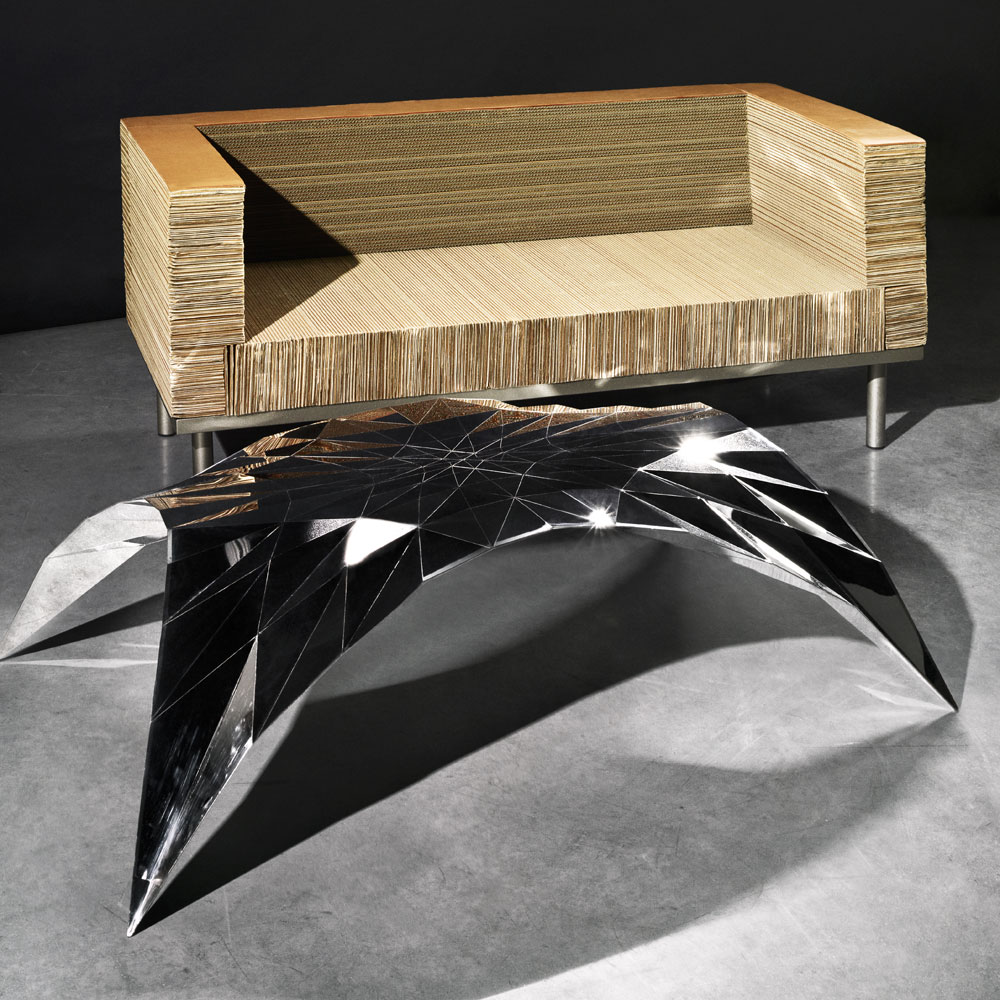
‘Papel’ sofa in corrugated cardboard and chromium-plated stainless steel, designed 1993, executed 2001, by Fernando & Humberto Campana. Foreground, ‘SQN5-T’ table, 2012, by Zhang Zhoujie.
Cécile Verdier, senior director and coworldwide head of 20th century design at Sotheby’s, is leaning against Marc Newson’s ‘Extruded Table 3’, a seemingly impossible piece of furniture laser-cut from a single block of Striato Olimpico marble. You can’t help but touch it. It requires no small amount of willpower not to lick it. ‘A consignment arrived last year with a group of six pieces from a European private collector,’ Verdier explains. ‘They were an interesting mixture of contemporary pieces – Hadid, Newson, Arad – and we were struck by the collective narrative of material expression. Wallpaper* was the obvious partner to help us tell this story. Tony and his team have helped cross the boundaries of different industries, introducing us to the pioneering and the common elements in design that shape modern life.’
This was the seed from which the auction has grown. It is a collection that traces the evolution of how designers master and manipulate materials, from the politeness of post-war furniture to the use of the most advanced technologies to achieve something more akin to alchemy. As such, there’s an anthropological thread to the hoard. The collection tells the story of modern design through the lens of materials, encompassing the evolution not just of technology, but of skill, taste, trend and wider social values, too.
Materiality is more than just a handy hook for bringing the collection together. It’s also a response to where we find ourselves today, reflecting our growing appreciation of materials. As daily life is increasingly spent in virtual worlds or on digital desktops, we yearn for analogue, physical experiences to act as a counterbalance. Materials summon up primal urges – hence the desire to lick the marble. ‘Across contemporary life we are witnessing profound appreciation for experiences and sensations that ground us,’ Chambers explains. ‘We respond to things that engage our senses and make us feel human.’ Bearing testament to this, in the warehouse there’s a lot of stroking going on.
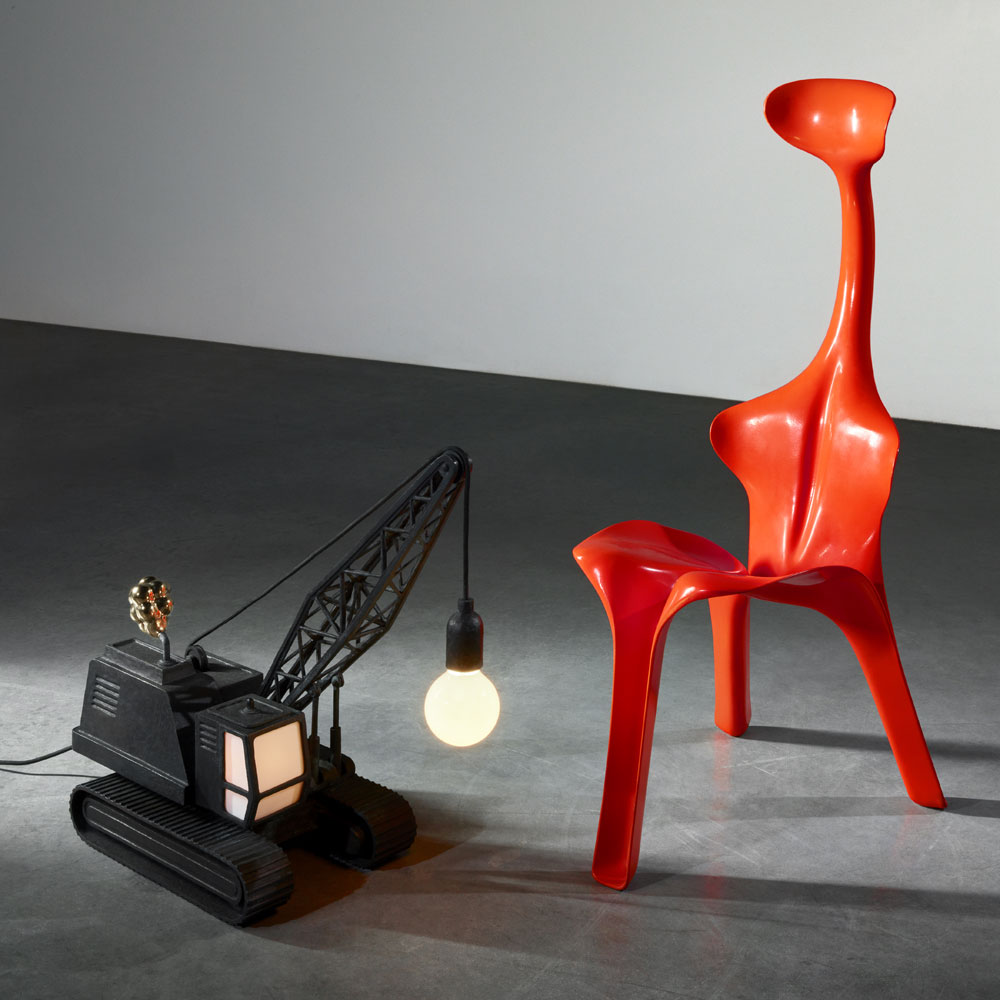
Left, ‘Wrecking Ball’ in cast patinated bronze, cast and polished brass, and glass, 2010, by Studio Job. Right, ‘Floris’ chair, 1967, by Günter Beltzig.
Laetitia Contat-Desfontaines, Sotheby’s 20th century design head of sale, elaborates, keeping one hand on Ron Arad’s ‘All Night Long’ table: ‘It’s almost like an antidote to our obsession with social media. We crave the materiality and texture that design offers. Craftsmanship is a tangible link to reality. It speaks of skill, tradition, quality and time – when we feel these qualities we build a relationship with the pieces.’
‘People buy design at auction because they love the piece,’ adds Verdier. ‘They don’t buy to sell, in the same way as they do with art. Generally, they live with the designs they buy, and use them, and so they have an intimate relationship with them – it’s a commitment.’
Surveying the diverse lots that will be up for auction in October, it’s a powerful concept. Taking materials as a starting point encourages a new appreciation of older, familiar pieces and a fuller interrogation of more contemporary designs. Joris Laarman’s extraordinary ‘Bone’ rocker, 3D-printed using powdered Belge Noir marble and resin, sits beside a mahogany bureau by Josef Frank for Svenskt Tenn, bedecked in botanicals. Both are exquisite examples of their period’s craftsmanship and material expression, six decades apart. Elsewhere, Pierre Jeanneret’s armchairs sit beside the Campana brothers’ ‘Cake’ stool; the elegant utility of wood and leather designed for civic duties in Chandigarh is juxtaposed with the synthetic fluffy toys found on São Paulo street stalls – kitsch commerce elevated into something valuable.
The breadth and depth of this collection makes clear how design has evolved over time in the minds and hands of different people. It is a positive story of progress. ‘Each piece is a story brought to life through materials,’ Chambers summarises. ‘Any new technology presents an opportunity for reinventing or developing a material into a new form. The story of design is effectively the combination of human ideas, material expression and technological development.’
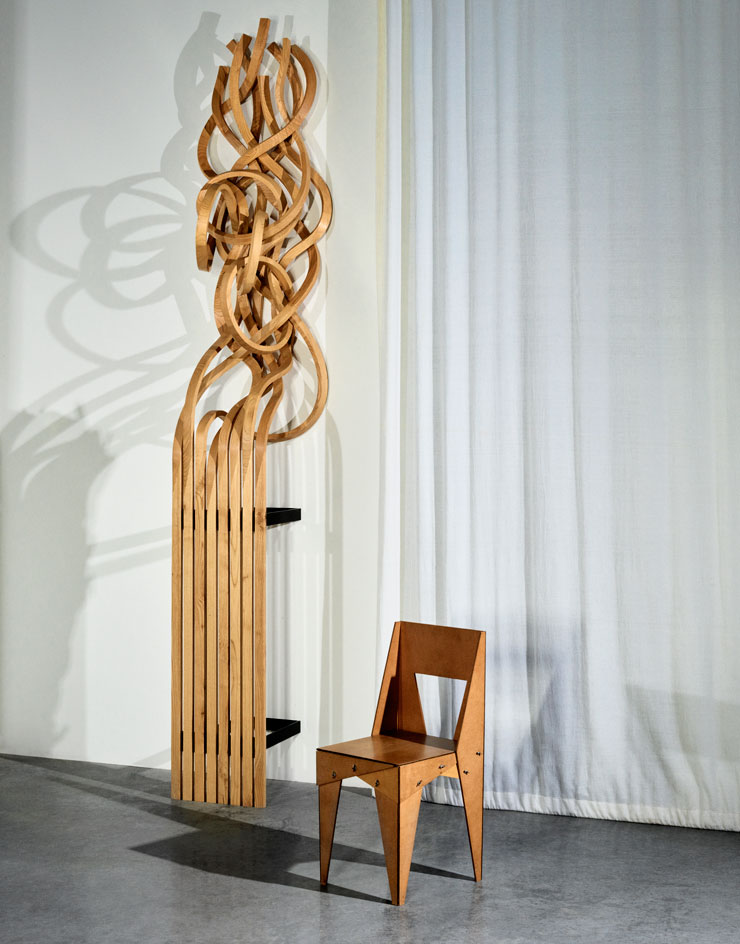
The auction will feature around 150 pieces of furniture, including the ‘Vertical’ bench (left) in wood and painted steel, 2016, by Pablo Reinoso and ‘Wing-Nut’ chair (right), 1985, by Jasper Morrison.
INFORMATION
‘Living in a Material World’, pre-sale exhibition: Friday 13 – Monday 16 October; auction: Tuesday 17 October, For more information, visit the Sotheby’s website
‘The Rise of Design and its Importance in our Digital World’ talk will take place on Saturday 14 October. The event is free, register for tickets here
Receive our daily digest of inspiration, escapism and design stories from around the world direct to your inbox.
ADDRESS
Sotheby’s
34–35 New Bond Street
London W1A 2AA

Hugo is a design critic, curator and the co-founder of Bard, a gallery in Edinburgh dedicated to Scottish design and craft. A long-serving member of the Wallpaper* family, he has also been the design editor at Monocle and the brand director at Studioilse, Ilse Crawford's multi-faceted design studio. Today, Hugo wields his pen and opinions for a broad swathe of publications and panels. He has twice curated both the Object section of MIART (the Milan Contemporary Art Fair) and the Harewood House Biennial. He consults as a strategist and writer for clients ranging from Airbnb to Vitra, Ikea to Instagram, Erdem to The Goldsmith's Company. Hugo recently returned to the Wallpaper* fold to cover the parental leave of Rosa Bertoli as global design director, and is now serving as its design critic.
-
 A new venture led by will.i.am, Trinity is an electric, AI-powered ‘brain on wheels’
A new venture led by will.i.am, Trinity is an electric, AI-powered ‘brain on wheels’The tilting Trinity 3-wheeler EV has emerged from a partnership between Nvidia, West Coast Customs, inventor Dean Kamen and tech-enthused musician and cultural entrepreneur will.i.am
-
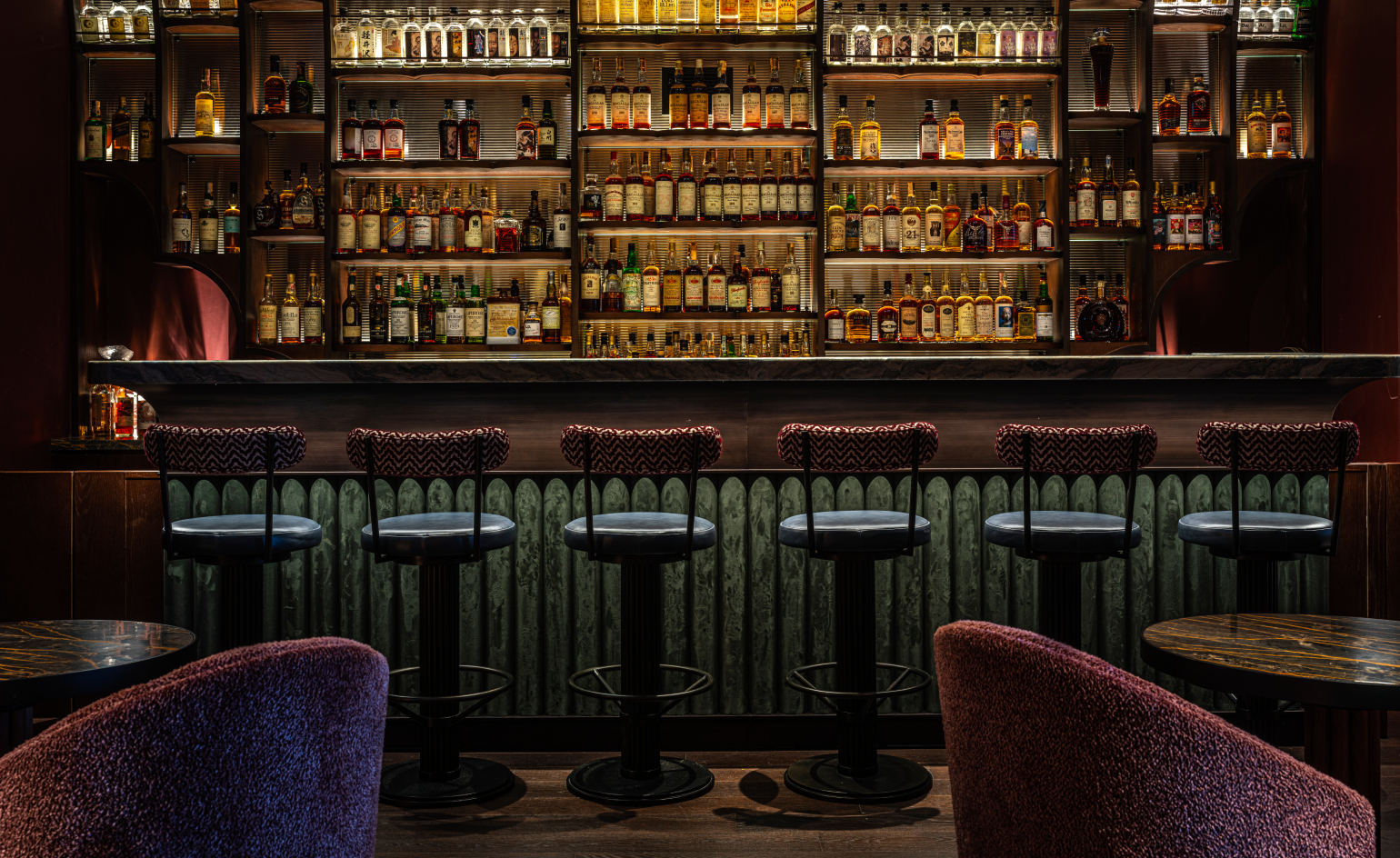 Wallpaper* Design Awards: Club Bâtard wins Best Social Hub 2026
Wallpaper* Design Awards: Club Bâtard wins Best Social Hub 2026Club Bâtard brings together an exclusive mix of fine dining and drinking across three floors of Hong Kong’s historic Pedder building
-
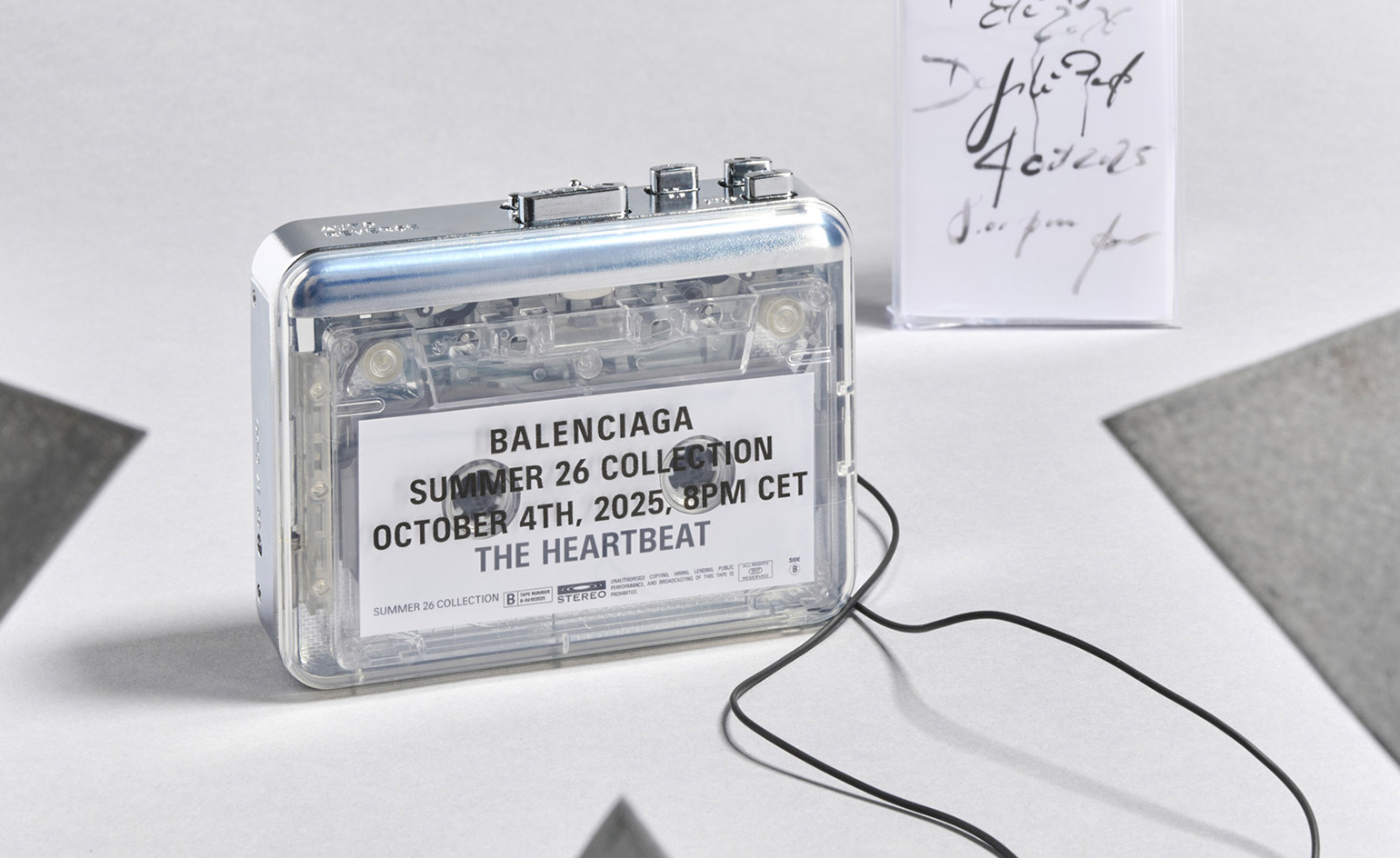 Wallpaper* Design Awards: this Balenciaga cassette player set our pulses racing
Wallpaper* Design Awards: this Balenciaga cassette player set our pulses racingThe invitation for Pierpaolo Piccioli’s debut runway show as creative director of Balenciaga was a cassette player that played a recording of a beating heart. It was our favourite invite of the year
-
 Step inside Faye Toogood's intimate cabinet of curiosities at PAD London
Step inside Faye Toogood's intimate cabinet of curiosities at PAD LondonFor PAD London 2025, (until 19 October) Faye Toogood presents The Magpie’s Nest with Friedman Benda
-
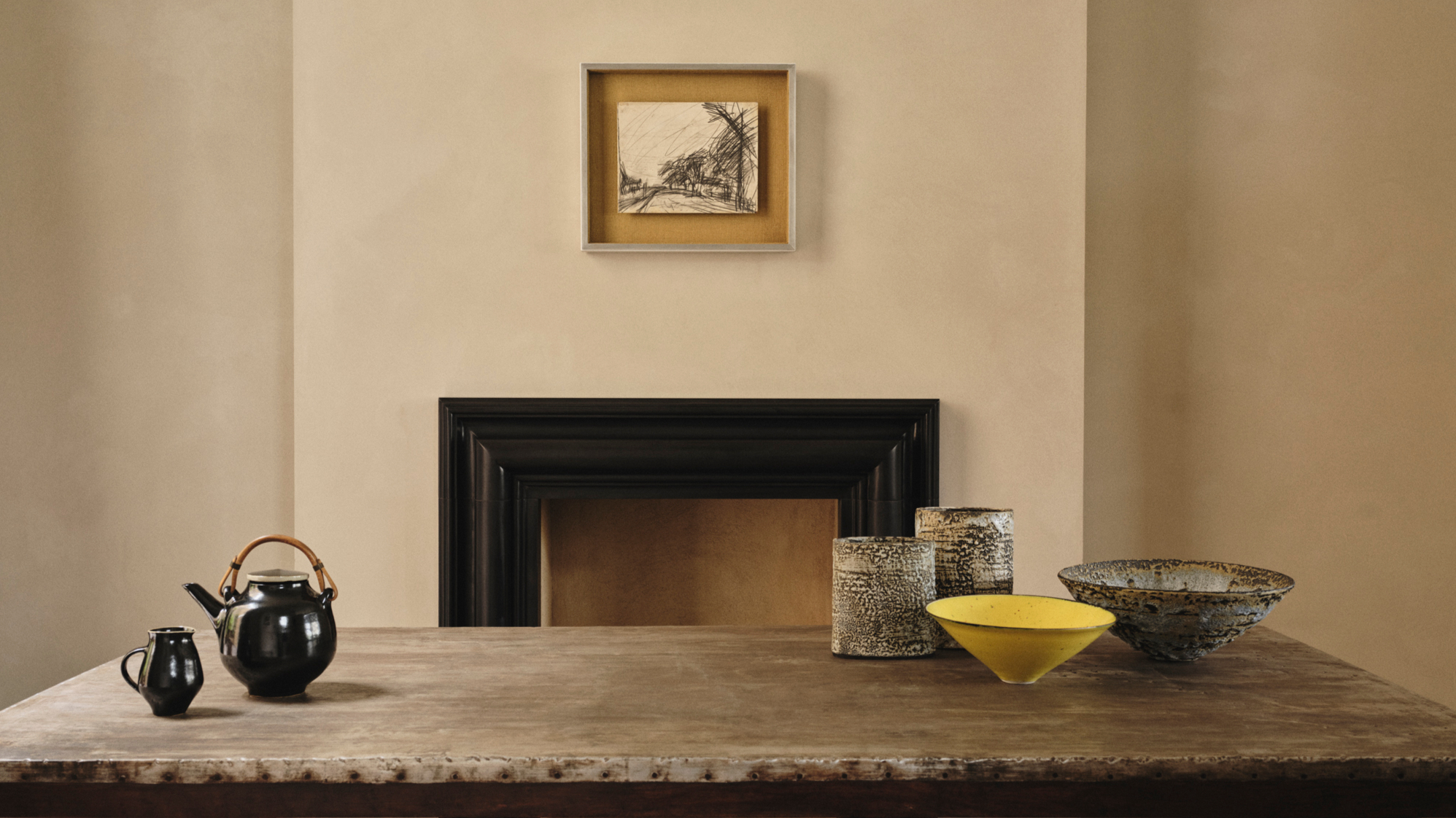 Rajan Bijlani opens his Primrose Hill home for ‘Electric Kiln’
Rajan Bijlani opens his Primrose Hill home for ‘Electric Kiln’In his London home – once the studio of ceramicist Emmanuel Cooper – Rajan Bijlani stages ‘Electric Kiln’, uniting Frank Auerbach, Lucie Rie and Cooper in an intimate reflection on the creative spirit of postwar London
-
 These are the design exhibitions to see in London during Frieze Week
These are the design exhibitions to see in London during Frieze WeekWe round up the best design events happening in London in conjunction with Frieze Week 2025: discover collectible design and craft across the city
-
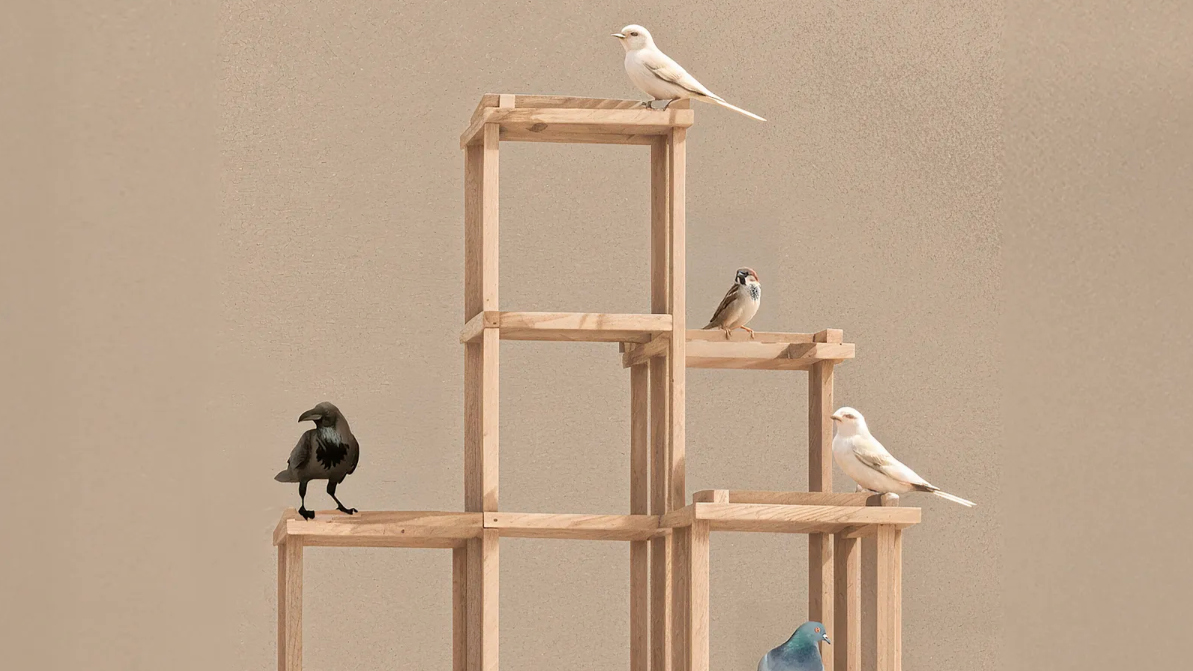 Norman Foster and nine other architects design birdhouses for charity – you can bid
Norman Foster and nine other architects design birdhouses for charity – you can bid‘Architects for the Birds’ is spearheaded by Norman Foster and the Tessa Jowell Foundation to raise funds to improve treatment for brain cancer. Ten architect-designed birdhouses will go up for auction
-
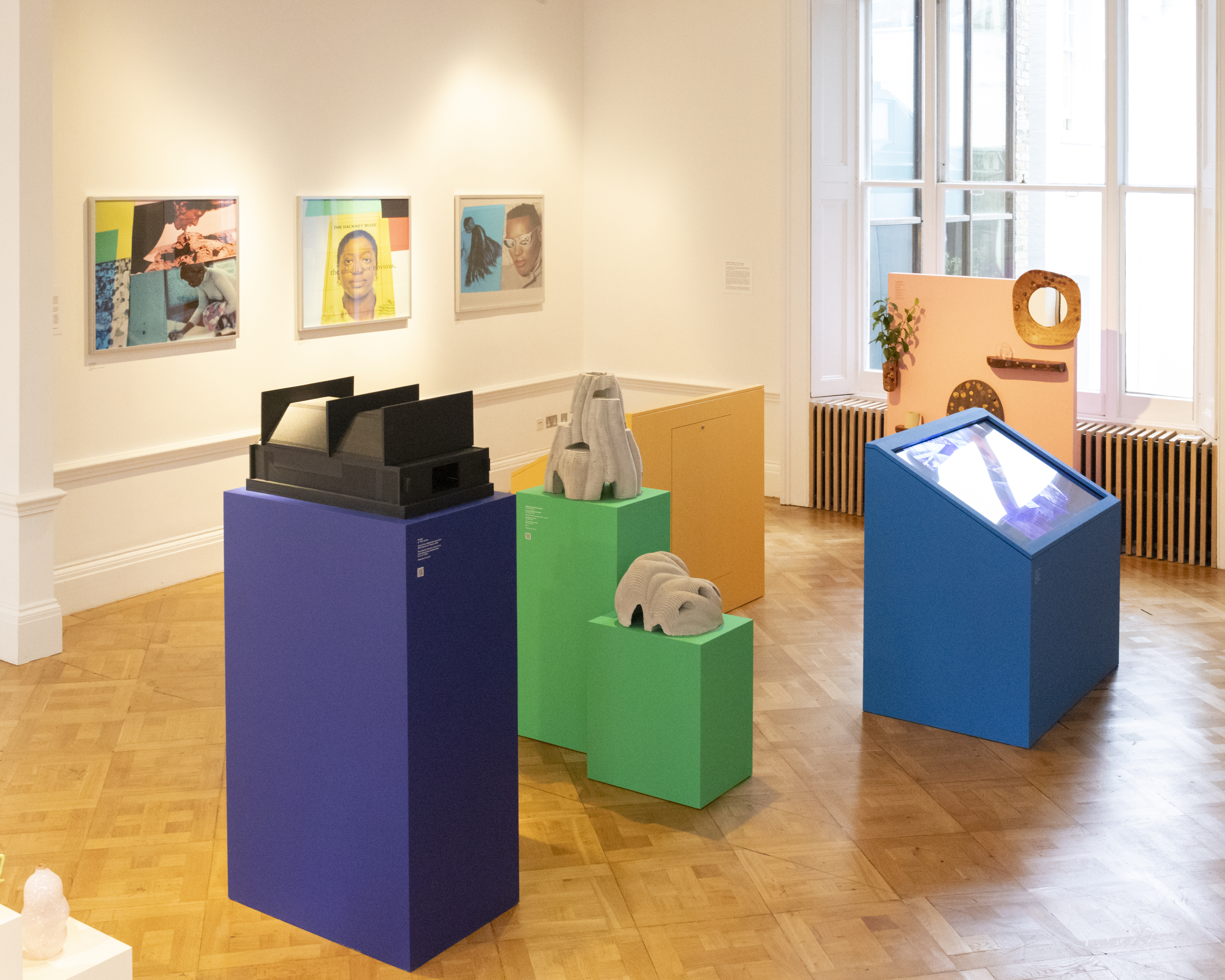 The David Collins Foundation celebrates creativity in all its forms at London Design Festival
The David Collins Foundation celebrates creativity in all its forms at London Design FestivalThe David Collins Foundation presents ‘Convergence’ at the Lavery during London Design Festival 2025 (on view until 19 September), featuring works from the Arts Foundation’s annual Futures Awards
-
 Lee Broom’s brutalist-inspired ‘Beacon’ will light up London as Big Ben strikes the hour
Lee Broom’s brutalist-inspired ‘Beacon’ will light up London as Big Ben strikes the hourSet to pulse through London Design Festival 2025 (13-22 September) and beyond, the British industrial designer’s sculptural light installation on the South Bank draws on its surroundings
-
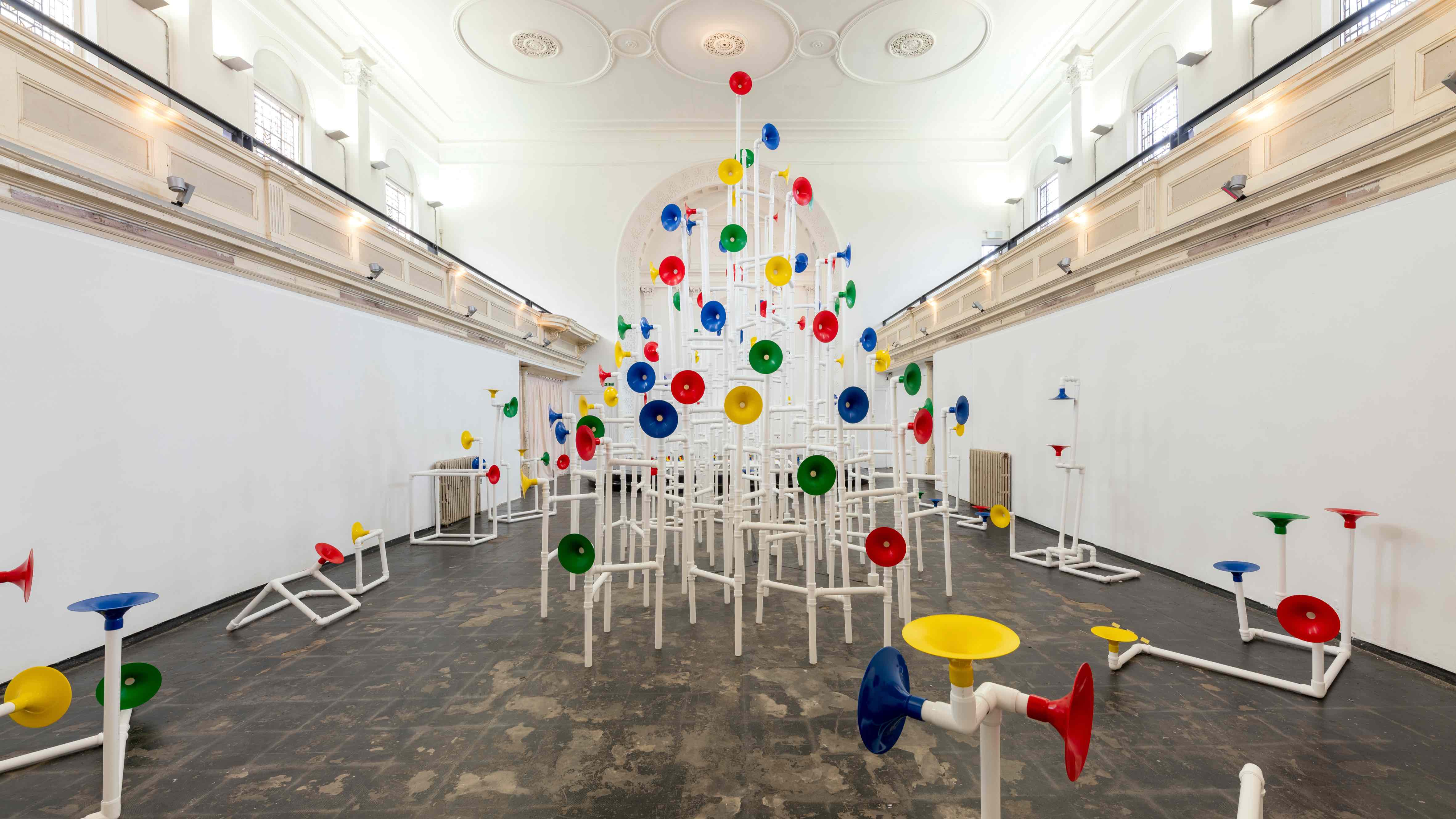 Yuri Suzuki turns sound into architecture at Camden Arts Projects
Yuri Suzuki turns sound into architecture at Camden Arts ProjectsThe sound designer unveils ‘Utooto’, an interactive installation at London’s Camden Arts Projects (until 5 October 2025), in which visitors collaboratively build a sonic piece of architecture
-
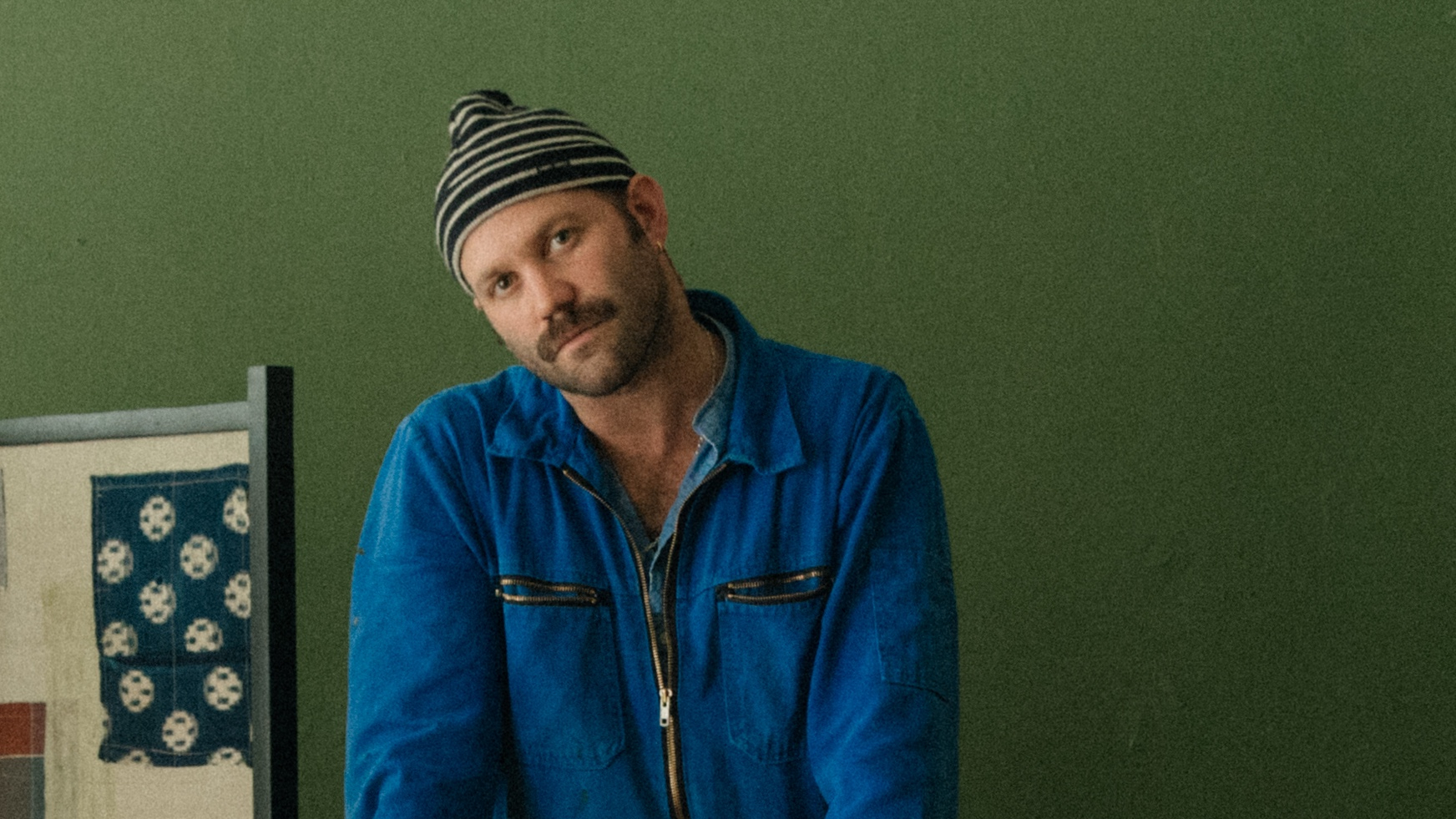 Alex Tieghi-Walker unveils his plans for Brompton Design District 2025
Alex Tieghi-Walker unveils his plans for Brompton Design District 2025Ahead of London Design Festival 2025, we catch up with New York gallerist Alex Tieghi-Walker about his appointment as curator of the Brompton Design District programme